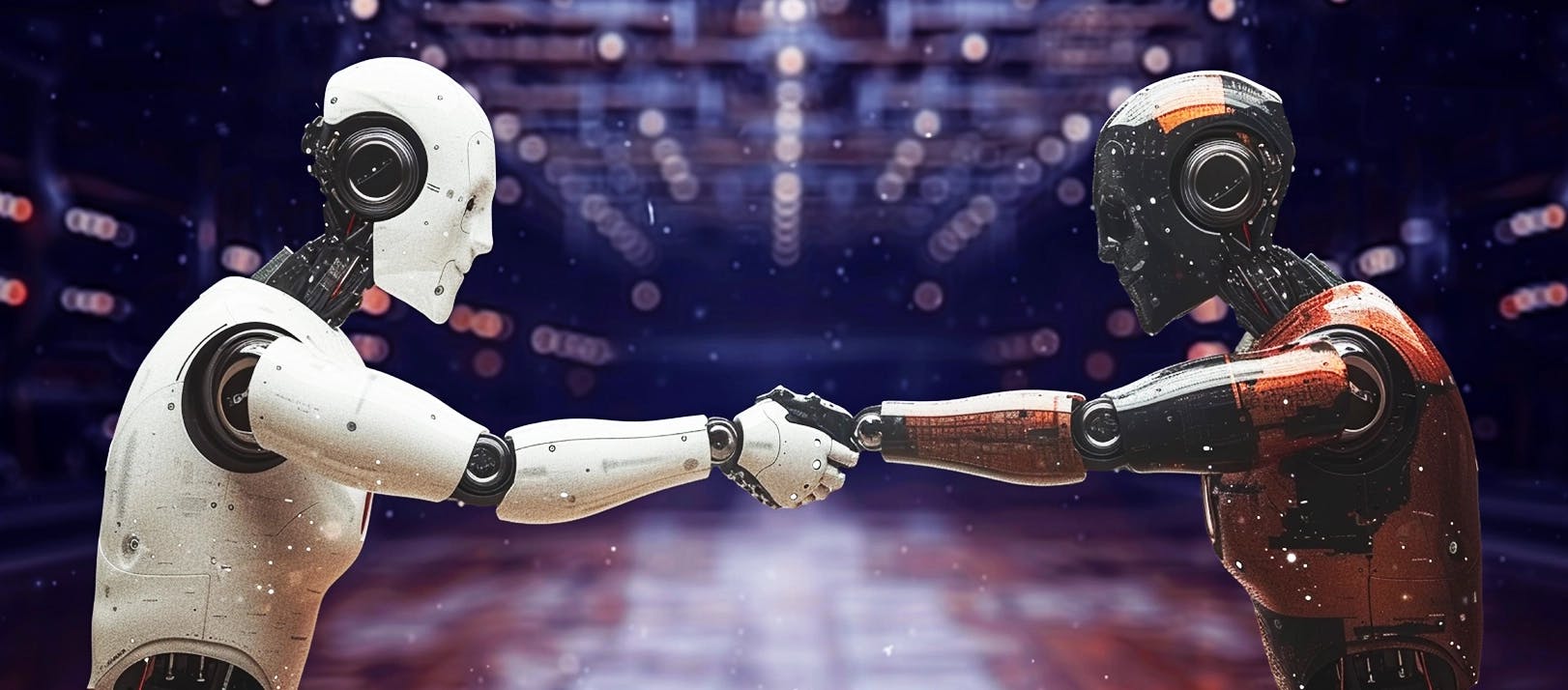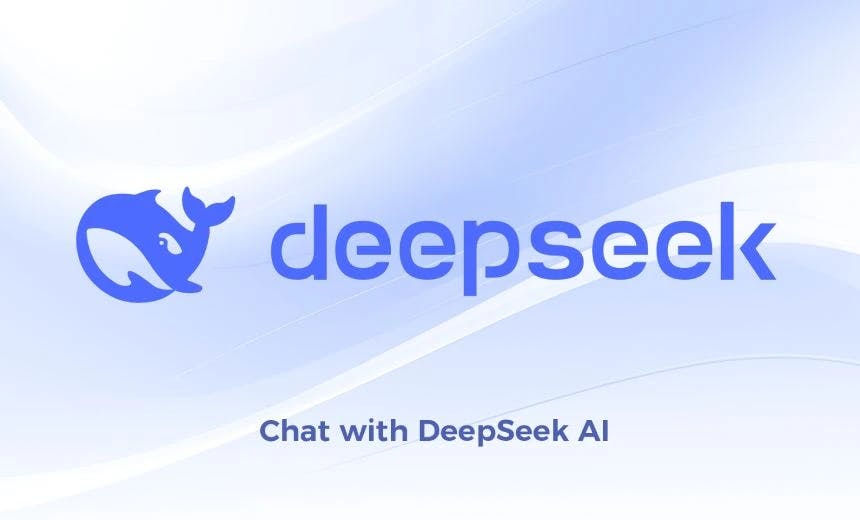
How to Building Intelligent AI Agents with DeepSeek Models
Artificial Intelligence (AI) has transformed how we interact with technology, and AI agents are at the heart of this revolution. AI agents are becoming increasingly sophisticated, from virtual assistants like Siri and Alexa to autonomous vehicles, and predictive and advanced recommendation systems.
Generative AI powers these agents, enabling them to generate dynamic, human-like responses in real time, process complex queries, and learn from interactions, which enhances customer support capabilities and overall user experience. One of the most powerful frameworks available today for human agents is DeepSeek.
In this blog, we’ll dive deep into how to build intelligent AI agents using DeepSeek models. We’ll explore what AI agents are, the role and importance of DeepSeek models in their development, and a step-by-step guide to designing, training, and deploying these agents for real-world applications. By the end, you’ll have a clear understanding of the process and the tools needed to create your AI agent.
AI has become a crucial component of modern industries, enabling businesses to automate repetitive tasks, improve customer interactions, and make data-driven decisions.
For example, AI-powered chatbots can handle customer queries around the clock, providing instant support and freeing human agents to focus on more complex issues. Predictive analytics tools help businesses forecast sales, optimize inventory, and identify potential customers, enhancing operational efficiency and profitability.
As AI technology continues to evolve, its importance in modern industries is likely to grow, driving innovation and transforming the way businesses operate.
Reasoning Capabilities of AI Agents:
1. Autonomy
AI agents can operate independently without constant human input. For example, a self-driving car uses sensors, cameras, and AI algorithms to navigate roads, make decisions, and avoid obstacles in real time. This requires robust decision-making frameworks like DeepSeek models to process sensory data and execute actions autonomously.
2. Adaptability
They learn from data and improve over time. For instance, a recommendation system uses machine learning algorithms to analyze user behaviour, preferences, and feedback. Over time, it refines its suggestions to better align with user interests, leveraging techniques like collaborative filtering or reinforcement learning.
3. Goal-oriented
They are designed to achieve specific objectives. For example, a supply chain optimization agent uses predictive analytics to minimize costs and maximize efficiency. It processes historical data, market trends, and real-time inputs to make decisions that align with its predefined goals.
4. Interactivity
They can communicate with users or other systems. Chatbots, for instance, use natural language processing (NLP) to understand user queries and generate contextually relevant responses, simulating human conversation. They integrate with backend systems to fetch information, process requests, and provide seamless user experiences.
To build such agents, we need robust AI models that can handle different types of complex tasks like natural language processing, decision-making, and learning. This is where DeepSeek models come into play.
What Are DeepSeek Models?
DeepSeek models are the key components of a class of advanced AI frameworks designed to handle large-scale data processing, deep learning, and real-time decision-making in artificial intelligence. These models are built on state-of-the-art neural network architectures and are optimized for tasks like:
- Natural Language Processing (NLP)
DeepSeek models excel at understanding and generating human language. They power chatbots, sentiment analysis tools, and language translation systems. These models use transformer architectures (like BERT or GPT) to process text data, enabling tasks like text classification, entity recognition, and summarization. - Computer Vision
DeepSeek models are capable of interpreting visual data, such as images and videos. Applications include facial recognition, object detection, and autonomous vehicle navigation. Convolutional Neural Networks (CNNs) are commonly used in these models to extract features from visual inputs and make accurate predictions. - Reinforcement Learning
DeepSeek models are optimized for tasks where agents learn through trial and error. In robotics, reinforcement learning algorithms enable robots to perform complex functions like grasping objects or navigating environments. These models use reward-based systems to improve performance iteratively. - Predictive Analytics
DeepSeek models can forecast future outcomes based on historical data. In finance, they can predict stock prices or detect fraudulent transactions. These models leverage time-series analysis, regression techniques, and deep learning to provide accurate predictions.
DeepSeek models utilize advanced machine learning methods, including neural networks, to enhance predictive analytics by recognizing patterns and managing nonlinear relationships in datasets.
DeepSeek models are particularly well-suited for building AI agents for business, because of their scalability, efficiency, and ability to learn from diverse datasets. They can process vast amounts of data quickly, making them ideal for real-time business applications like autonomous driving or live customer support.
What is DeepSeek Models?
DeepSeek models are a type of AI architecture that uses deep learning techniques to analyze and interpret data. These models are designed to mimic the human brain’s ability to recognize patterns and make decisions based on that data. By leveraging advanced neural network architectures, DeepSeek models can process vast amounts of information, making them highly effective in applications ranging from image recognition to natural language processing.
DeepSeek Models and Their Architecture
DeepSeek models consist of multiple layers of neural networks that work together to analyze and interpret data. These models use a range of techniques, including convolutional neural networks (CNNs) and recurrent neural networks (RNNs), to recognize patterns and make predictions. CNNs are particularly effective for tasks involving image and video data, as they can identify spatial hierarchies and features within the visual input.
RNNs, on the other hand, are well-suited for sequential data, such as text or time series, as they can capture temporal dependencies and context. The architecture of DeepSeek models is designed to enable them to learn and improve over time, making them highly adaptable and effective in a range of applications, from image recognition to natural language processing.
Steps to Build Intelligent AI Agents with DeepSeek Models
Building an AI agent with DeepSeek models involves several steps, from defining the problem to deploying the solution. Let's break down each step in detail:
AI systems are vulnerable to various security risks that can compromise their integrity and functionality. Understanding these risks is essential for developing effective security measures to mitigate them.
Our team at Codiste can be the rightful partner to lead your AI development journey.
1. Define the Problem and Objectives
Identify the Use Case: Determine the specific task your AI agent will perform. For example:
- An AI chatbot for customer service to provide 24/7 support and handle complex queries.
- A recommendation system for an e-commerce platform.
- An autonomous robot for warehouse management.
Set Clear Goals: Define what success looks like. For instance:
- A chatbot’s goal might be to resolve 90% of customer queries without human intervention.
- A recommendation system’s goal might be to increase sales by 20% through personalized suggestions.
2. Choose the Right DeepSeek Model and Machine Learning Algorithms
Task-Specific Models: Select a DeepSeek model tailored to your use case. For example:
- Use NLP models for language-based tasks like chatbots or sentiment analysis.
- Use computer vision models for image recognition or object detection.
- Use reinforcement learning models for decision-making tasks like game playing or robotics.
Pre-Trained vs. Custom Models:
- Pre-Trained Models: These are models that have already been trained on large datasets and can be fine-tuned for specific tasks. They are ideal for quick deployment.
- Custom Models: If your task requires specialized knowledge or unique data, you may need to train a custom model from scratch.
3. Data Collection and Preparation
Gather Data: Collect high-quality, relevant data for training and testing your AI agent. For example:
- For a chatbot, gather conversational datasets from customer service logs, social media interactions, or publicly available dialogue corpora.
- For a recommendation system, collect user interaction data like clicks, purchases, ratings, and browsing history.
- It is crucial to utilize collected data to train AI agents effectively, ensuring they provide accurate and tailored customer support
Clean and Preprocess Data: Prepare the data for training by:
- Removing noise and irrelevant information (e.g., stopwords in text data or outliers in numerical data).
- Handling missing values using techniques like imputation or deletion.
- Normalizing or standardizing data to ensure compatibility with DeepSeek r1 models.
Augment Data: Use techniques like data augmentation to increase the diversity and size of your dataset. For example:
- In image recognition, transformations like rotation, flipping, cropping or colour jittering are applied to create more training examples.
- In NLP, techniques like synonym replacement, back-translation, or paraphrasing are used to generate additional text data.
4. Train the DeepSeek Model
Model Configuration: Set up the DeepSeek model architecture, including:
- The number of layers and neurons determines the model's capacity to learn complex patterns.
- The choice of optimization algorithm (e.g., Adam, SGD) and loss function (e.g., cross-entropy for classification, mean squared error for regression).
- Hyperparameters like learning rate, batch size, and dropout rate influence the model's performance and generalization.
Training Process: Train the model on your dataset using:
- Supervised Learning: For tasks with labelled data, like classification or regression. For example, a sentiment analysis model is trained on text data labelled with positive, negative, or neutral sentiments.
- Unsupervised Learning: For tasks like clustering or anomaly detection. For example, a customer segmentation model groups users based on their behaviour without predefined labels.
- Reinforcement Learning: For functions where the agent learns through trial and error, like game playing or robotics. For example, an AI agent learns to play a game by maximizing rewards and minimizing penalties.
Evaluation: Test the model's performance using metrics like:
- Accuracy: The percentage of correct predictions that are suitable for balanced datasets.
- Precision and Recall: For tasks like fraud detection or information retrieval, where false positives and false negatives have different implications.
- F1 Score: A balance between precision and recall, proper for imbalanced datasets.
5. Integrate the Model into the AI Agent
API Integration: Use APIs to connect the DeepSeek model to your AI agent's framework. For example:
- A chatbot might use an NLP API to process user inputs and generate responses.
- An autonomous vehicle might use a computer vision API to detect obstacles.
Real-Time Processing: Ensure the agent can process inputs and generate outputs in real-time. This is crucial for applications like live customer support or autonomous driving.
Feedback Loop: Implement mechanisms for the agent to learn from user interactions and improve over time. For example:
- A chatbot can learn from user feedback to improve its responses.
- A recommendation system can update its suggestions based on user behaviour.
6. Deploy and Monitor
Deployment: Launch the AI agent in your desired environment, whether it's a web application, mobile app, or IoT device. For example:
- A chatbot can be deployed on a company's website or messaging platforms like WhatsApp.
- An autonomous robot can be deployed in a warehouse or factory.
Monitoring: Track the agent's performance using analytics tools and gather user feedback. For example:
- Monitor the chatbot's response accuracy and user satisfaction.
- Track the recommendation system's impact on sales and user engagement.
Iterative Improvement: Continuously update the DeepSeek model and agent based on new data and insights. For example:
- Retrain the model with new data to improve accuracy.
- Add new features to the agent based on user feedback.
What if we told you that you can customize an AI Agent to work specifically for you?
Real-World Applications of AI Agents Built with DeepSeek Models
Here are some examples of how DeepSeek-powered AI marketing agents are being used across industries:
Healthcare
- AI agents analyze patient data (e.g., medical records and lab results) to provide personalized treatment recommendations.
- For example, DeepSeek models can predict disease progression or recommend optimal drug dosages.
- Virtual health assistants use NLP to answer patient queries, schedule appointments, and provide medication reminders. These agents integrate with electronic health records (EHR) systems to access patient information securely.
NLP in E-Commerce
- Recommendation systems use collaborative filtering or content-based filtering to suggest products based on user preferences and behaviour.
- For example, DeepSeek models analyze browsing history, purchase patterns, and product ratings to generate personalized recommendations.
- Chatbots handle customer support by resolving common queries, processing returns, and providing product information. These agents use NLP to understand user intents and generate contextually relevant responses.
Autonomous Vehicles
- AI agents process sensor data (e.g., LiDAR, radar, cameras) to navigate and avoid obstacles. DeepSeek models use computer vision and reinforcement learning to interpret sensory inputs and make real-time decisions.
- They optimize routes and improve fuel efficiency by analyzing traffic patterns, road conditions, and vehicle performance data.
Predictive Analytics in Finance
- Fraud detection systems use anomaly detection algorithms to identify suspicious transactions in real-time. DeepSeek models analyze transaction patterns, user behaviour, and historical data to flag potential fraud.
- AI agents provide personalized financial advice based on user data, such as income, expenses, and investment goals. These agents use predictive analytics to recommend savings plans, investment strategies, or loan options.
Challenges and Considerations of Deepseek
While building AI agents with DeepSeek models offers immense potential, there are challenges to consider:
- Data Privacy: Ensure compliance with data protection regulations like GDPR.
- Bias and Fairness: Address potential biases in training data to ensure fair and ethical AI.
- Scalability: Design agents that can handle increasing workloads without compromising performance.
- Explainability: Make sure the agent's decisions are transparent and understandable to users.
The Future of AI Agents with DeepSeek Models
As AI technology continues to evolve, the capabilities of AI agents developed will only grow. DeepSeek models are at the cutting edge of this evolution, enabling the creation of agents that are more intelligent, adaptive, and human-like. Future advancements may include:
- Multimodal Agents: Agents that can process and integrate multiple types of data, such as text, images, and audio.
- Emotionally Intelligent Agents: Agents that can understand and respond to human emotions.
- Collaborative Agents: Agents that can work together with humans and other AI systems to achieve complex goals.
Conclusion
Building intelligent AI agents with DeepSeek models is a powerful way to leverage the latest advancements in AI technology. By following the steps outlined in this blog, you can create agents that are not only efficient and effective but also capable of learning and adapting over time. Whether you're developing a chatbot, a recommendation system, or an autonomous vehicle, DeepSeek models provide the tools and knowledge you need to succeed.



A Deep Dive into How Agentic RAG Automat...
Know more
Is Agentic RAG Worth the Investment? Age...
Know more
What is an AI Voice Agent for Customer C...
Know more
